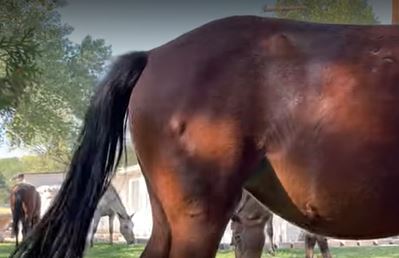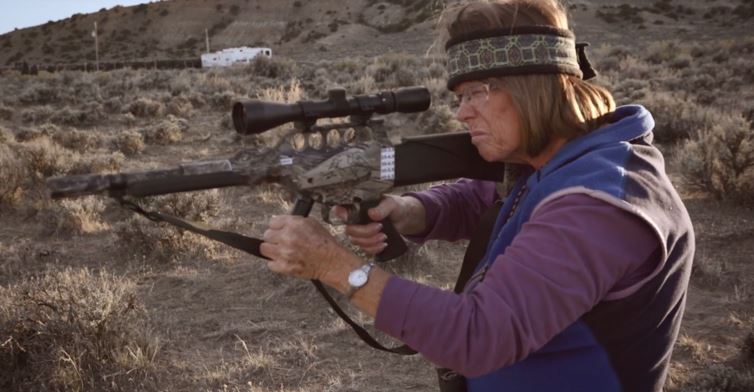The fastest way to remove excess horses and shift resources back to the public-lands ranchers is by helicopter.
Darting programs can achieve the same results but over much longer periods of time.
The debate rests on the faulty notion that areas set aside for wild horses and burros should be managed primarily, if not principally, for cattle and sheep.
Helicopters can reduce wild horse populations by two thirds in just a few weeks, as seen over the summer at Onaqui Mountain and Sand Wash Basin.
A reduction of that size by PZP darting would require over 20 years, assuming a zero percent birth rate and five percent death rate.
Injuries and deaths are not uncommon in helicopter roundups but the horses usually bounce back, perhaps at a slower rate if mares returned to the range were treated with fertility control and/or the sex ratio of the herd was tilted in favor of the stallions.
There is no bouncing back with darting programs. Injuries do occur and after five years many of the mares are sterile. They still eat, exactly what the ranchers don’t want.

This year on Assateague Island, a paragon of wild horse management according to the advocates, the herd was only able to produce a 7.8% growth rate—five years after the darting program was shut off. In previous years, the population declined.
So how can the advocates make their darting programs more appealing to the ranchers and bureaucrats, whose approval they seek at the expense of our wild horses?
To put their programs on par with the roundups, something must be done about the death rate.
One possibility is to couple the darting programs with the introduction of predators, which the ranchers will oppose straight away.
Another possibility is to spike their darting formulations with something that hastens illness and death, inconspicuously, of course.
Too far-fetched? They’re ruthless.

The Pine Nut advocates recently acquired a Jeep to chase the mares as far as necessary to make sure they don’t reproduce.
The Virginia Range advocates are pumping PZP into a herd of approximately 3,200 males and females at a rate of 4,200 doses per year.
Good luck finding a youngster if you visit the Salt River.
As the advocates mull their options against a backdrop of growing support from a misinformed public, and continued skepticism of the bureaucrats and ranchers, is it reasonable to assume a constant death rate over the life of their darting programs?
A graphical model, known as the Bathtub Curve, shows failure rates of manufactured products as a function of their age. The message of the Bathtub Curve is that, after a certain period, failure rates go up as things get older.
If everyone in the country was in their twenties, you wouldn’t find many obituaries in the newspaper. If everyone was at least 60, that section might be a bit more active.
When a darting program is fully implemented, the average age of the herd increases, because no new foals are hitting the ground.
If the bathtub model prevails, at some point the death rate will begin to increase as more horses reach the “wear out” period.
This might help the advocates sell their programs to the bureaucrats without the need for controversial enhancements.
If you start with 1,000 horses and stop all reproduction, 950 would remain at the end of Year 1 with a 5% death rate. In Year 2, 48 horses would die, leaving 902. In Year 3, 45 would die and so forth. This is the blue line in the following chart.
With no new foals, the average age of the herd will go up, so the death rate will likely increase as the program takes hold.
If you start with 1,000 horses and a 5% death rate, but the death rate increases one half percentage point every year thereafter (.005), 50 horses would die in the first year, 52 would die in the second year, 54 would die in the third year, etc. This is the orange line in the chart.

A 50% reduction in herd size, from 1,000 to 500, instead of taking 13 years in the constant-rate scenario, only requires nine years in the rising-rate scenario.
Although darting programs may increase wild horse death rates without any added effort, they will never match the efficiency and effectiveness of helicopter roundups in shifting resources back to the public-lands ranchers.
The advocates will likely be consigned to a mopping-up role in the management process, protecting the ranchers after the fact by making sure the horses don’t bounce back.
RELATED: Darting Programs and Helicopter Roundups on Same Side of Coin.

I think the darting program is horrible. I’m not pro helicopters either. The Wild Horse and Borro act was suppose to protect them. All horse people know that not every mare will settle or come to full term with a goal each year. So saying that the herd produce one goal to every mare each year is wrong. The best plan would probably be trapping some horses each year and sending them to training programs and sold. Then remove some of the cattle and sheep from our public lands. These are America’s horses and we want them. Besides they are a valuable tourist attraction, which effects the economy for many states. I feel the predators need to remain too. Some how man does not seem to be able to coexist with other species .